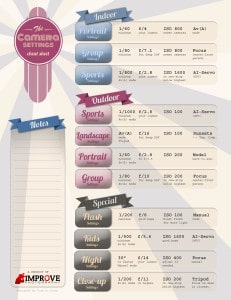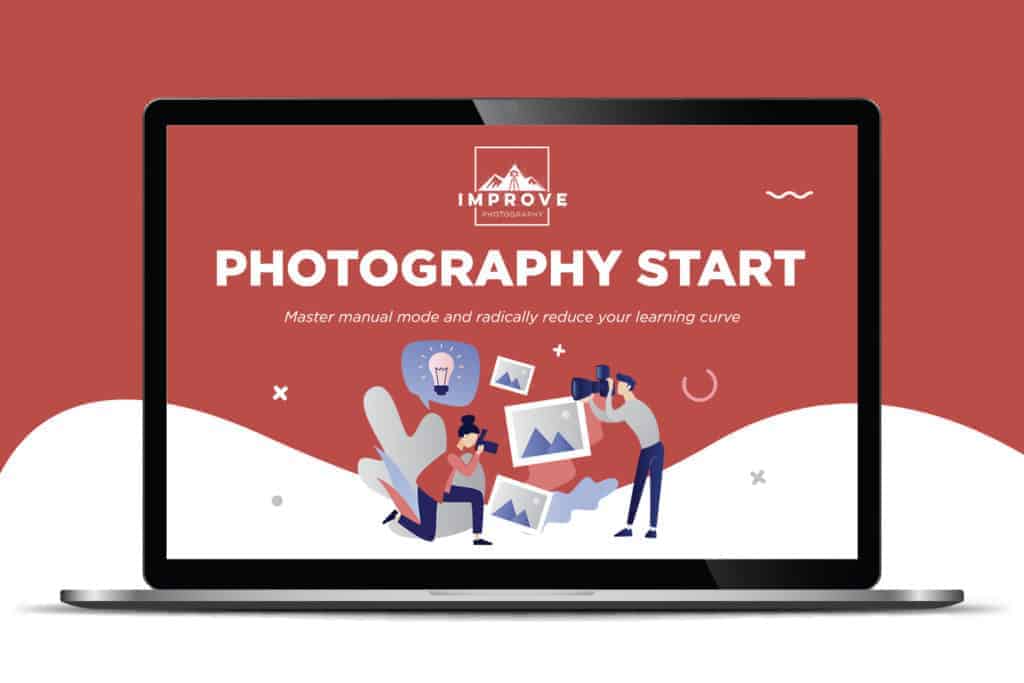I'm so glad you found your way onto my Photography Basics series. I have taught the basics of photography to millions of photographers around the world through Improve Photography, so I know just exactly how difficult it can seem to learn the basics of photography.
My goal is to make this Photography Basics series the absolute simplest way to learn the basics of photography.
I hope you'll love this series because of what you learn here, and I hope you'll join the Improve Photography community after you get your feet wet with the photo basics. Let's get going.
Basic Equipment You'll Need
You can do photography with even the simplest of cameras, but the principles that I'd like to teach are for people who want to learn to use a DSLR camera, a micro four-thirds camera, or at least a camera that allows the photographer to adjust the shutter speed, aperture, and ISO. Even some pocket cameras have this functionality.
Here are some of our entry level DSLR options. The (with Accessories) link will show you a kit that comes with the camera, lens, case, extra battery, and a memory card:
Canon EOS Rebel T6 with 18-55mm and 75-300mm Lenses (with Accessories)
Nikon D5600 with 18-55mm and 70-300mm Lenses (with Accessories)
Canon EOS Rebel T7i with 18-135mm Lens (with Accessories)
Now that you have your camera, it is time to learn exposure.
Exposure–the most basic element of photography
When photographers talk about “exposure,” we simply mean the brightness or darkness of a photo. It seems simple enough to take a photo that is correctly exposed (has the proper brightness or darkness), but in reality it can be quite the trick.

To help get the right exposure with your camera settings – you can download this Camera Settings Cheat Sheet guide.
If you're reading this Photo Basics series, it probably means that you currently shoot on the “Green mode” of your camera–or the automatic setting. That means the camera entirely controls the exposure of the picture. When you shoot on automatic mode, your camera selects an aperture setting, an ISO setting, a shutter speed, and a host of other settings for you.
Automatic can be handy, but it also seriously limits your creative ability to make a beautiful picture.
Want proof that automatic isn't the best way to shoot? Check out the picture below. On the left, the picture was taken entirely in automatic mode on a Canon Rebel DSLR. That might look okay to you… until you see the picture on the right. Same sunset. Same camera. The pictures were taken only seconds apart. The difference? The picture on the right was taken using manual exposure.

Which photo do you prefer? Probably the picture on the right! By choosing a creatively dark exposure, the rich colors in the sunset were allowed to shine through.
However, technically, the photo on the left is “correct,” and the photo on the right is “incorrect.” The camera saw through the lens and tried to expose the bird so that it wouldn't become a shadow. To me, the photo was not about exposing the bird properly, but exposing the sunset properly. The bird was just a nice shape to include in the foreground. This is exactly why you must learn exposure–because sometimes the “scientifically correct” exposure is not the best exposure to make the photo look how you want it to.
What's next?
Now that you understand why it is so important to take control over the exposure, let's move on to shutter, aperture and ISO–which are the tools you need to control the exposure. Soon you'll understand the basics of how to shoot in manual mode on your camera. I promise shooting in manual mode isn't nearly as scary as you might think.
Once you're ready to deepen your knowledge of manual mode, get tack sharp focus, and master lighting, consider buying my Photography Start Course. It's a series of 22 video tutorials where I walk you step-by-step through the things that it normally takes my photography students two years to learn. Other photography websites sell a very similar course for $300. I've priced it at a REALLY reasonable price because I remember how tight money was when I was a beginner.



V7qGEPuo
-1 OR 3+819-819-1=0+0+0+1
-1;select pg_sleep(6); —
1′”
Q2MqZytC
v3hpymSJ’));select pg_sleep(9); —
It really helpful for me and I will focus on these points.
Clonazepam is the medication doctors prescribe for treating seizures. It helps in controlling and preventing the possibilities of seizures. Additionally, the medicine also goes by the name anticonvulsant and anti-elliptical medicine.
Xanax for sale is for the cure of anxiety disorders and the short-term relief of symptoms of anxiety in adults. Alprazolam is used to treat anxiety and panic disorders.
Thank you for sharing article and information. this is very helpful for beginner.
I always receive the best information from your site. So, I feel that your site is the best. I am waiting for new information from you. Thanks for your great site.I thought of sharing the updated list of website here that should help you further and are not limited.
Clonazepam-Buy-online is used to prevent and control seizures. This medication is known as an antiepileptic drug.Klonopin, a benzodiazepine, is available in tablet form scored with a K-shaped perforation.
Hi,
I watched your flash photography video learning flash in 10 minutes. Nicely informative.
So I bought what I thought I needed for my specific needs.
This medication is known as an antiepileptic drug.Klonopin, a benzodiazepine, is available in tablet form scored with a K-shaped perforation.
thanks for sharing these information!
Thank you a lot 🙂
Amazing photography i liked it @!!
I purchased a course From you a couple years ago & there was too much going on in my life at the time & I was never able to View the course. I tried to log in today but have not been able to. I don’t know if you changed your website & now I can’t get into the course or what has happened. I would really like to view it so I can learn photography. Thanks.
Violet451
You are sharing amazing knowledge on photography here! Exposure is usually hard to master, even the greatest photographers may find struggles with it sometimes. Regarding the correct exposure, it only depends on the photographer’s view. If the incorrect exposure suits the artist’s vision, then it doesn’t matter what is technically correct or incorrect.
The report covers forecast and analysis for the Veterinary Orthopaedic Implants Market on a global and regional level. The study provides historical data from 2015 to 2018 along with a forecast from 2019 to 2025 based on revenue (USD Million). The study includes drivers and restraints for the veterinary orthopedic implants market along with the impact they have on the demand over the forecast period.